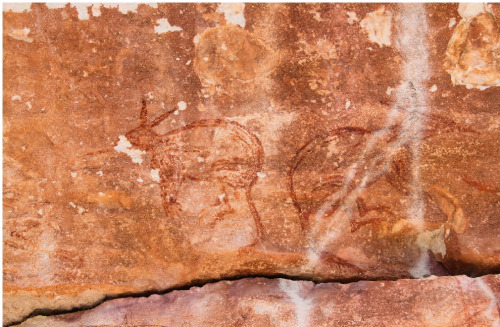
A northern section of Australia is revealing an entirely different form of rock art, previously unknown to non-indigenous peoples. From Awunbarna all the way to the Namunidjbuk clan estate of the Wellington Range, scientists and local Aboriginal research partners have found 87 rock shelters housing unusually tall cave paintings.
Humans are usually shown interacting with animals, when humans are shown at all. Compared to older cave art depictions, these figures are less focused on humans, and more on animals. The survey found only about 42% percent of the paintings are of humans.
One of the paper’s authors, Namunidjbuk elder Ronald Lamilami, named the new style “Maliwawa” after an area within his traditional clan estate’s name in their Mawng language. Hence, they will be known as the Maliwawa Figures. The Maliwawa Figures’ cultural cachement stretches 130 kilometers (80 or so miles) and contains 572 individual pieces (that have been discovered so far). Radiocarbon dating and comparison to other regional styles suggests it was made sometime between 6,000 and 9,400 years age. This makes the Maliwawa style the bridge between early-style Dynamic Figures around 12,000 years ago and later X-ray figures of the past 4,000 years.